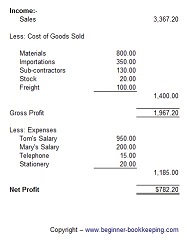Content

In these cases, you may need to know the property’s fair market value or the adjusted basis of the previous owner. The cost is the amount you pay in cash, debt obligations, or other property or services. For special rules https://online-accounting.net/ relating to the deferral of net gain from section 1256 contracts, see section 1400Z-2. The loss carried back to any year under this election cannot be more than the net section 1256 contracts gain in that year.
When unrestricted, airlines will re-accelerate fleet-modernization programs, purchase new fuel-efficient aircraft and become more sophisticated at data analytics. Those with weak balance sheets and uncompetitive offerings will disappear. Only two companies manufacture the majority of short- and long-haul aircraft, and four aircraft engine companies dominate the global market and service the bulk of the installed fleet. Is loaded with B2B technology companies that are expanding more deeply into corporate services, and have the advantage of recurring revenue from software as a service models. This type of business-process outsourcing began years ago with customer service call centers, often located in countries with low labor costs.
Invest Smarter with The Motley Fool
Do not add the amounts in Form 1099-INT, box 9, and Form 1099-DIV, box 12, to, or subtract them from, the amounts on Form 1099-INT, box 8, and Form 1099-DIV, box 11. You are reporting interest income of less than the amount shown on a Form 1099 due to amortizable bond premium. You received interest from a seller-financed mortgage, and the buyer used the property as a home. Generally, you report all your taxable interest income on Form 1040 or 1040-SR, line 2b.
- Although exempt-interest dividends are not taxable, you must show them on your tax return if you have to file a return.
- If the hedging transaction relates to property other than stock or securities, the limit on hedging losses applies if the limited partner or entrepreneur is an individual.
- If this amount is less than the amount of your capital gain, you can postpone the rest of that gain.
- On May 7, 2021, you bought 100 shares of Baker Corporation stock for $1,000.
- The below-market loan rules and exceptions are described in this section.
If the issuer decides to call their preferred stocks at a call price lower than their market value, you might end up with a lower return. Preferred and common stocks are great ways to invest in the U.S. stock market and grow your wealth. But what is the difference between common stock and preferred stock? We’ll break down each type of investment and compare their strengths and weaknesses. Not surprisingly, investors have been digging under a lot of rocks in search of income. As John Rekenthaler wrote recently, preferred stocks have been one of the most popular areas being discussed as a bond substitute. The eminent Burton Malkiel spoke favorably about preferred stocks on Morningstar’s The Long View podcast in August.
Cons of investing in ETFs
If your investment club is treated as a partnership, it must file Form 1065, U.S. However, as a partner in the club, you must report on your individual return your share of the club’s income, gains, losses, deductions, and credits for the club’s tax year. (Its tax year generally must Preferred Stock ETF Pros, Cons and Examples be the same tax year as that of the partners owning a majority interest.) You must report these items whether or not you actually receive any distribution from the partnership. Usually the group operates informally with members pledging to pay a regular amount into the club monthly.
- Although U.S. growth currently remains healthy, rising real [inflation-adjusted] rates and a stronger dollar will begin to challenge activity, as will higher oil prices squeezing real incomes.
- I ultimately decided that I would hold off on buying any preferred stock ETFs until I evaluated more offerings.
- Depending on the circumstances, a gain or loss on a sale or trade of property used in a trade or business may be treated as either capital or ordinary, as explained in Pub.
- Make the election on Form 8949 and Schedule D by treating the sale or exchange as the sale or exchange of a capital asset, according to Form 8949 and Schedule D and their separate instructions.
- Stocks posted gains of more than 20 percent, with virtually no pullbacks.
- If you do not know the yield, consult your broker or tax advisor.
- Preferred stock also can be “called” (i.e., redeemed by the company) on a prespecified date.
